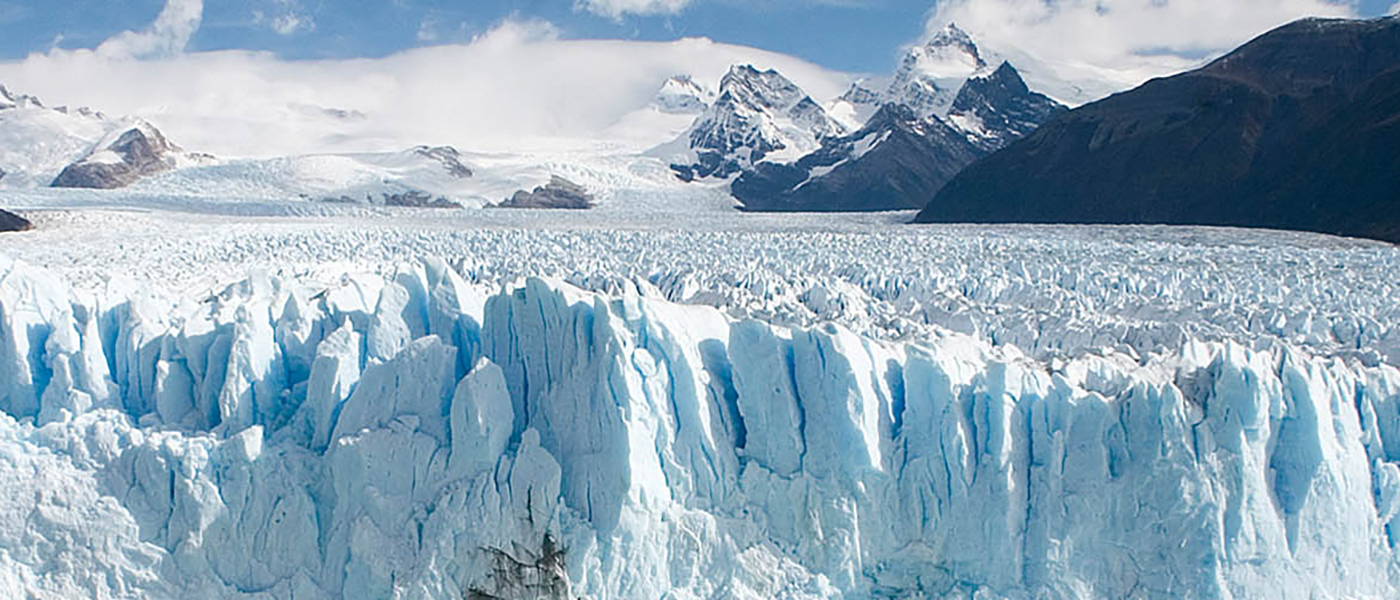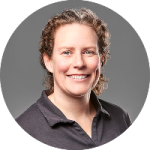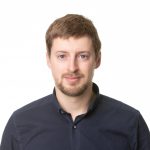Earth
The Earth research area focuses on understanding the Earth’s physical and chemical processes, structure and evolution, from the surface to the core. It encompasses a range of disciplines that explore the interactions and feedbacks between Earth surface processes, geochemistry and geodynamics. Research topics include sedimentology, structural geology, petrology, hydrogeology, hydrology, geophysics, fluvial geomorphology, stable isotope geochemistry and geoarchaeology. This area also includes the reconstruction of past climates, continents and landscapes through interdisciplinary studies, such as paleoenvironmental analysis to provide insights into Earth’s history and future.
Information Box Group
Altaf Arain
Professor
Associate Member: Civil Engineering
Dr. M. Altaf Arain‘s research program focuses on hydrometeorology, climatology, evapotranspiration, forest and agricultural carbon and water cycles and ecosystem, watershed and global climate models. He has established a multidisciplinary ecosystem restoration and environmental sustainability research program that explores the interactions and feedbacks between biogeochemical and hydrologic cycles in different-age and -species forest ecosystems and agricultural crops. As part of this program, he has established Turkey Point Environmental Observatory, comprising five flux tower stations near Lake Erie in Southern Ontario, which are part of Global Water Futures (GWF), Ameriflux, global Fluxnet and US-Canada Global Centre programs. Using ground based (eddy covariance, soil CO2 efflux, sapflow systems) and airborne (e.g. drone and satellite remote sensing) his group is exploring carbon sequestration capabilities, water use and sensitivity and resilience of plantation or managed forests and crops to future climate change and extreme weather events. His Lab is also involved in the development of the Canadian Land Surface Scheme Including Biogeochemical Cycles (CLASSIC) used in the Canadian Earth System Model (CanESM) for climate predictions and integrated biogeochemical and hydrologic modelling systems (MESH-CLASSIC) for catchment-scale water cycle studies.
Janok Bhattacharya
Professor
Susan Cunningham Research Chair in Geology
Director, School of Earth, Environment & Society
Dr. Janok Bhattacharya‘s research program is mostly focused on investigating the sequence stratigraphy and 3D facies architecture of shelf, shallow marine, paralic, and fluvial depositional systems. Although much industry exploration effort is currently focused on deepwater depositional systems, about 50% of global oil production is currently from shallow marine, paralic and fluvial strata. Despite the continued importance of these reservoir types, ours is one of the only research programs devoted to this important area.
I am also investigating the interrelationships between structure and stratigraphy as a paired process. Specific projects are aimed at examining the effects of meso-scale tectonic structure on high-frequency sequence stratigraphic architecture in foreland basins and the relationship between sedimentation processes and formation of growth faults associated with deltaic depositional systems.
My research program is founded on the fundamentals of sedimentology, fieldwork, facies analysis, and sequence stratigraphy. Our program also crosses the boundaries between geophysics and engineering disciplines and provides an important environment for teamwork and integration that we believe provides a model for industry.
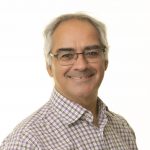
Janok Bhattacharya
Professor
Susan Cunningham Research Chair in Geology
Director, School of Earth, Environment & Society
Joseph Boyce
Associate Professor
Dr. Joe Boyce is geoarchaeologist who studies Holocene landscape evolution and paleoenvironmental change using sediment records from lakes and coastal archaeological sites. His current research is focussed on the investigation of submerged landscapes and prehistoric underwater and terrestrial sites in the Great Lakes, Greece and western Turkey. His research interests also include the application of geophysical methods (ground-penetrating radar, seismic reflection, magnetometry) in archaeology, forensics and biogeosciences.
Sean Carey
Professor (on Research leave)
Dr. Carey directs the Watershed Hydrology Group and his research interests include hydrological, biogeochemical and land surface processes in natural and human impacted environments.
The group Dr. Carey uses field, laboratory and modelling approaches to understand how hydrological processes interact and influence ecosystem, biogeochemical and catchment processes across scales. Dr. Carey has a particular interest in cold environments and has been working in Yukon Territory for over 20 years. In addition, the influence of landscape disturbance on catchment processes has been an area of focus as the group seeks to help both industry and regulators understand and mitigate large scale disturbance in northern regions.
Dr. Carey serves on the Global Water Futures Strategic Management Committee and is the Principal Investigator fo the Mountain Water Futures program.
Alemu Gonsamo
Associate Professor
Canada Research Chair (Tier 2) in Remote Sensing of Terrestrial Ecosystems
My research areas are on ground, airborne, and satellite remote sensing of vegetation from the leaf to the globe with special focus on:
- plant structural and photosynthetic traits;
- land surface and carbon uptake phenology;
- terrestrial ecosystem primary productivity and greenness;
- global change impact on terrestrial ecosystem productivity; and
- terrestrial carbon cycle modelling.
I have done, and am doing, remote sensing of vegetation studies at ecological monitoring sites (e.g., eddy covariance tower networks); on improved product development at regional scale (e.g., leaf area index, primary productivity and land surface phenology); and on global change impact assessment on terrestrial ecosystem productivity at regional (e.g., circumpolar land surface phenology and atmospheric CO2 seasonality) and global scales. Besides remote sensing data, I use ground measurements of plant biophysical variables, photosynthetic traits, atmospheric CO2 concentration, eddy covariance CO2 fluxes and plant phenology; gridded climate data records; terrestrial ecosystem carbon cycle models; and Earth System Model (ESM) outputs.
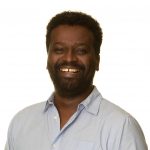
Alemu Gonsamo
Associate Professor
Canada Research Chair (Tier 2) in Remote Sensing of Terrestrial Ecosystems
Sang-Tae Kim
Professor
Research Goals
- Understanding of stable isotope effects in the carbonate-water systems based on laboratory-based experiments and field-based empirical studies.
- Providing the scientific community with new, accurate, and robust geochemical proxies for probing climatic, environmental, and biogeochemical processes.
- Developing novel analytical methods that greatly improve the existing analytical efficiency and cost effectiveness for Earth science communities.
Maureen Padden
Associate Professor
Not currently accepting graduate students
Elli Papangelakis
Assistant Professor
Fairley Gadsby Research Chair in Fluvial Geomorphology
Dr. Elli Papangelakis is an Assistant Professor in the School of Earth, Environment & Society at McMaster University. She has a multidisciplinary education background, with a BSc in Physics and Geography (University of Toronto), a MSc in Geography (UBC), and a PhD in Civil and Environmental Engineering (University of Waterloo). Her research focuses on the effects of urbanization and land-use change on the geomorphic processes of rivers through a combination of fieldwork, laboratory, and GIS research methods. Her primary goal is to better understand sediment transport processes, morphologic adjustments, and physical habitat characteristics of urban rivers. She is particularly interested in urban river restoration and management, specifically on assessing the performance of different restoration designs and in the development of novel river management strategies that bring together the most advanced science and technology from different fields. Most of her research focuses is confused in Southern Ontario, which provides an excellent example of heavily-urbanized and managed fluvial environments. She also works with salmon habitat restoration projects in British Columbia.
Examples of exciting new approaches her research group employs:
- Gravel augmentation to rehabilitate urban rivers
- Measuring geomorphic parameters using UAV (drone) based imaging
- GIS-based erosion sensitivity models
- Citizen science for geomorphic monitoring

Elli Papangelakis
Assistant Professor
Fairley Gadsby Research Chair in Fluvial Geomorphology
Alexander Peace
Associate Professor
My research primarily focuses on the structural, tectonic and magmatic evolution of continental margins, including the adjacent onshore areas and offshore sedimentary basins. I am particularly interested in rifting and breakup, rift-related magmatism, structural inheritance and mantle dynamics.
Geographically, my work to date has focused on the continental margins of the North Atlantic and surrounding regions including: Newfoundland, Greenland, Jan Mayen, Labrador and the UK/Irish margin. The nature of my work requires a multifaceted approach incorporating a wide variety of approaches and methodologies such as: seismic interpretation, field-based studies, numerical modelling, petrology, structural modelling and geochemistry.
Dr. Peace is the faculty lead for the D. Keith MacDonald Earth Sciences Structural Geology Advancement Fund. This fund, generously gifted by alumnus Keith MacDonald ’80, P. Geo, advances research and experiential learning opportunities in structural geology. The fund supports the student research, including fieldwork and acquisition of key equipment, enabling students to develop skills that take them beyond McMaster and impact the wider geology community.
Eduard Reinhardt
Professor
Associate Director, Graduate Studies (SEES)
Dr. Eduard G. Reinhardt is a micropaleontologist studying how groundwater condition changed over climate cycles using cave sediments. His recent research in the Yucatan of Mexico focusses on reconstructing the potability of groundwater through drought cycles during the late Holocene. This has implications for the decline of Maya civilizations but also for future groundwater management in the coastal zone.
Altaf Arain
Professor
Associate Member: Civil Engineering
Dr. M. Altaf Arain‘s research program focuses on hydrometeorology, climatology, evapotranspiration, forest and agricultural carbon and water cycles and ecosystem, watershed and global climate models. He has established a multidisciplinary ecosystem restoration and environmental sustainability research program that explores the interactions and feedbacks between biogeochemical and hydrologic cycles in different-age and -species forest ecosystems and agricultural crops. As part of this program, he has established Turkey Point Environmental Observatory, comprising five flux tower stations near Lake Erie in Southern Ontario, which are part of Global Water Futures (GWF), Ameriflux, global Fluxnet and US-Canada Global Centre programs. Using ground based (eddy covariance, soil CO2 efflux, sapflow systems) and airborne (e.g. drone and satellite remote sensing) his group is exploring carbon sequestration capabilities, water use and sensitivity and resilience of plantation or managed forests and crops to future climate change and extreme weather events. His Lab is also involved in the development of the Canadian Land Surface Scheme Including Biogeochemical Cycles (CLASSIC) used in the Canadian Earth System Model (CanESM) for climate predictions and integrated biogeochemical and hydrologic modelling systems (MESH-CLASSIC) for catchment-scale water cycle studies.
Altaf Arain
Professor
Associate Member: Civil Engineering
Dr. M. Altaf Arain‘s research program focuses on hydrometeorology, climatology, evapotranspiration, forest and agricultural carbon and water cycles and ecosystem, watershed and global climate models. He has established a multidisciplinary ecosystem restoration and environmental sustainability research program that explores the interactions and feedbacks between biogeochemical and hydrologic cycles in different-age and -species forest ecosystems and agricultural crops. As part of this program, he has established Turkey Point Environmental Observatory, comprising five flux tower stations near Lake Erie in Southern Ontario, which are part of Global Water Futures (GWF), Ameriflux, global Fluxnet and US-Canada Global Centre programs. Using ground based (eddy covariance, soil CO2 efflux, sapflow systems) and airborne (e.g. drone and satellite remote sensing) his group is exploring carbon sequestration capabilities, water use and sensitivity and resilience of plantation or managed forests and crops to future climate change and extreme weather events. His Lab is also involved in the development of the Canadian Land Surface Scheme Including Biogeochemical Cycles (CLASSIC) used in the Canadian Earth System Model (CanESM) for climate predictions and integrated biogeochemical and hydrologic modelling systems (MESH-CLASSIC) for catchment-scale water cycle studies.
Janok Bhattacharya
Professor
Susan Cunningham Research Chair in Geology
Director, School of Earth, Environment & Society
Dr. Janok Bhattacharya‘s research program is mostly focused on investigating the sequence stratigraphy and 3D facies architecture of shelf, shallow marine, paralic, and fluvial depositional systems. Although much industry exploration effort is currently focused on deepwater depositional systems, about 50% of global oil production is currently from shallow marine, paralic and fluvial strata. Despite the continued importance of these reservoir types, ours is one of the only research programs devoted to this important area.
I am also investigating the interrelationships between structure and stratigraphy as a paired process. Specific projects are aimed at examining the effects of meso-scale tectonic structure on high-frequency sequence stratigraphic architecture in foreland basins and the relationship between sedimentation processes and formation of growth faults associated with deltaic depositional systems.
My research program is founded on the fundamentals of sedimentology, fieldwork, facies analysis, and sequence stratigraphy. Our program also crosses the boundaries between geophysics and engineering disciplines and provides an important environment for teamwork and integration that we believe provides a model for industry.
Janok Bhattacharya
Professor
Susan Cunningham Research Chair in Geology
Director, School of Earth, Environment & Society
Dr. Janok Bhattacharya‘s research program is mostly focused on investigating the sequence stratigraphy and 3D facies architecture of shelf, shallow marine, paralic, and fluvial depositional systems. Although much industry exploration effort is currently focused on deepwater depositional systems, about 50% of global oil production is currently from shallow marine, paralic and fluvial strata. Despite the continued importance of these reservoir types, ours is one of the only research programs devoted to this important area.
I am also investigating the interrelationships between structure and stratigraphy as a paired process. Specific projects are aimed at examining the effects of meso-scale tectonic structure on high-frequency sequence stratigraphic architecture in foreland basins and the relationship between sedimentation processes and formation of growth faults associated with deltaic depositional systems.
My research program is founded on the fundamentals of sedimentology, fieldwork, facies analysis, and sequence stratigraphy. Our program also crosses the boundaries between geophysics and engineering disciplines and provides an important environment for teamwork and integration that we believe provides a model for industry.
Joseph Boyce
Associate Professor
Dr. Joe Boyce is geoarchaeologist who studies Holocene landscape evolution and paleoenvironmental change using sediment records from lakes and coastal archaeological sites. His current research is focussed on the investigation of submerged landscapes and prehistoric underwater and terrestrial sites in the Great Lakes, Greece and western Turkey. His research interests also include the application of geophysical methods (ground-penetrating radar, seismic reflection, magnetometry) in archaeology, forensics and biogeosciences.
Joseph Boyce
Associate Professor
Dr. Joe Boyce is geoarchaeologist who studies Holocene landscape evolution and paleoenvironmental change using sediment records from lakes and coastal archaeological sites. His current research is focussed on the investigation of submerged landscapes and prehistoric underwater and terrestrial sites in the Great Lakes, Greece and western Turkey. His research interests also include the application of geophysical methods (ground-penetrating radar, seismic reflection, magnetometry) in archaeology, forensics and biogeosciences.
Sean Carey
Professor (on Research leave)
Dr. Carey directs the Watershed Hydrology Group and his research interests include hydrological, biogeochemical and land surface processes in natural and human impacted environments.
The group Dr. Carey uses field, laboratory and modelling approaches to understand how hydrological processes interact and influence ecosystem, biogeochemical and catchment processes across scales. Dr. Carey has a particular interest in cold environments and has been working in Yukon Territory for over 20 years. In addition, the influence of landscape disturbance on catchment processes has been an area of focus as the group seeks to help both industry and regulators understand and mitigate large scale disturbance in northern regions.
Dr. Carey serves on the Global Water Futures Strategic Management Committee and is the Principal Investigator fo the Mountain Water Futures program.
Sean Carey
Professor (on Research leave)
Dr. Carey directs the Watershed Hydrology Group and his research interests include hydrological, biogeochemical and land surface processes in natural and human impacted environments.
The group Dr. Carey uses field, laboratory and modelling approaches to understand how hydrological processes interact and influence ecosystem, biogeochemical and catchment processes across scales. Dr. Carey has a particular interest in cold environments and has been working in Yukon Territory for over 20 years. In addition, the influence of landscape disturbance on catchment processes has been an area of focus as the group seeks to help both industry and regulators understand and mitigate large scale disturbance in northern regions.
Dr. Carey serves on the Global Water Futures Strategic Management Committee and is the Principal Investigator fo the Mountain Water Futures program.
Alemu Gonsamo
Associate Professor
Canada Research Chair (Tier 2) in Remote Sensing of Terrestrial Ecosystems
My research areas are on ground, airborne, and satellite remote sensing of vegetation from the leaf to the globe with special focus on:
- plant structural and photosynthetic traits;
- land surface and carbon uptake phenology;
- terrestrial ecosystem primary productivity and greenness;
- global change impact on terrestrial ecosystem productivity; and
- terrestrial carbon cycle modelling.
I have done, and am doing, remote sensing of vegetation studies at ecological monitoring sites (e.g., eddy covariance tower networks); on improved product development at regional scale (e.g., leaf area index, primary productivity and land surface phenology); and on global change impact assessment on terrestrial ecosystem productivity at regional (e.g., circumpolar land surface phenology and atmospheric CO2 seasonality) and global scales. Besides remote sensing data, I use ground measurements of plant biophysical variables, photosynthetic traits, atmospheric CO2 concentration, eddy covariance CO2 fluxes and plant phenology; gridded climate data records; terrestrial ecosystem carbon cycle models; and Earth System Model (ESM) outputs.
Alemu Gonsamo
Associate Professor
Canada Research Chair (Tier 2) in Remote Sensing of Terrestrial Ecosystems
My research areas are on ground, airborne, and satellite remote sensing of vegetation from the leaf to the globe with special focus on:
- plant structural and photosynthetic traits;
- land surface and carbon uptake phenology;
- terrestrial ecosystem primary productivity and greenness;
- global change impact on terrestrial ecosystem productivity; and
- terrestrial carbon cycle modelling.
I have done, and am doing, remote sensing of vegetation studies at ecological monitoring sites (e.g., eddy covariance tower networks); on improved product development at regional scale (e.g., leaf area index, primary productivity and land surface phenology); and on global change impact assessment on terrestrial ecosystem productivity at regional (e.g., circumpolar land surface phenology and atmospheric CO2 seasonality) and global scales. Besides remote sensing data, I use ground measurements of plant biophysical variables, photosynthetic traits, atmospheric CO2 concentration, eddy covariance CO2 fluxes and plant phenology; gridded climate data records; terrestrial ecosystem carbon cycle models; and Earth System Model (ESM) outputs.
Sang-Tae Kim
Professor
Research Goals
- Understanding of stable isotope effects in the carbonate-water systems based on laboratory-based experiments and field-based empirical studies.
- Providing the scientific community with new, accurate, and robust geochemical proxies for probing climatic, environmental, and biogeochemical processes.
- Developing novel analytical methods that greatly improve the existing analytical efficiency and cost effectiveness for Earth science communities.
Sang-Tae Kim
Professor
Research Goals
- Understanding of stable isotope effects in the carbonate-water systems based on laboratory-based experiments and field-based empirical studies.
- Providing the scientific community with new, accurate, and robust geochemical proxies for probing climatic, environmental, and biogeochemical processes.
- Developing novel analytical methods that greatly improve the existing analytical efficiency and cost effectiveness for Earth science communities.
Maureen Padden
Associate Professor
Not currently accepting graduate students
Maureen Padden
Associate Professor
Not currently accepting graduate students
Elli Papangelakis
Assistant Professor
Fairley Gadsby Research Chair in Fluvial Geomorphology
Dr. Elli Papangelakis is an Assistant Professor in the School of Earth, Environment & Society at McMaster University. She has a multidisciplinary education background, with a BSc in Physics and Geography (University of Toronto), a MSc in Geography (UBC), and a PhD in Civil and Environmental Engineering (University of Waterloo). Her research focuses on the effects of urbanization and land-use change on the geomorphic processes of rivers through a combination of fieldwork, laboratory, and GIS research methods. Her primary goal is to better understand sediment transport processes, morphologic adjustments, and physical habitat characteristics of urban rivers. She is particularly interested in urban river restoration and management, specifically on assessing the performance of different restoration designs and in the development of novel river management strategies that bring together the most advanced science and technology from different fields. Most of her research focuses is confused in Southern Ontario, which provides an excellent example of heavily-urbanized and managed fluvial environments. She also works with salmon habitat restoration projects in British Columbia.
Examples of exciting new approaches her research group employs:
- Gravel augmentation to rehabilitate urban rivers
- Measuring geomorphic parameters using UAV (drone) based imaging
- GIS-based erosion sensitivity models
- Citizen science for geomorphic monitoring
Elli Papangelakis
Assistant Professor
Fairley Gadsby Research Chair in Fluvial Geomorphology
Dr. Elli Papangelakis is an Assistant Professor in the School of Earth, Environment & Society at McMaster University. She has a multidisciplinary education background, with a BSc in Physics and Geography (University of Toronto), a MSc in Geography (UBC), and a PhD in Civil and Environmental Engineering (University of Waterloo). Her research focuses on the effects of urbanization and land-use change on the geomorphic processes of rivers through a combination of fieldwork, laboratory, and GIS research methods. Her primary goal is to better understand sediment transport processes, morphologic adjustments, and physical habitat characteristics of urban rivers. She is particularly interested in urban river restoration and management, specifically on assessing the performance of different restoration designs and in the development of novel river management strategies that bring together the most advanced science and technology from different fields. Most of her research focuses is confused in Southern Ontario, which provides an excellent example of heavily-urbanized and managed fluvial environments. She also works with salmon habitat restoration projects in British Columbia.
Examples of exciting new approaches her research group employs:
- Gravel augmentation to rehabilitate urban rivers
- Measuring geomorphic parameters using UAV (drone) based imaging
- GIS-based erosion sensitivity models
- Citizen science for geomorphic monitoring
Alexander Peace
Associate Professor
My research primarily focuses on the structural, tectonic and magmatic evolution of continental margins, including the adjacent onshore areas and offshore sedimentary basins. I am particularly interested in rifting and breakup, rift-related magmatism, structural inheritance and mantle dynamics.
Geographically, my work to date has focused on the continental margins of the North Atlantic and surrounding regions including: Newfoundland, Greenland, Jan Mayen, Labrador and the UK/Irish margin. The nature of my work requires a multifaceted approach incorporating a wide variety of approaches and methodologies such as: seismic interpretation, field-based studies, numerical modelling, petrology, structural modelling and geochemistry.
Dr. Peace is the faculty lead for the D. Keith MacDonald Earth Sciences Structural Geology Advancement Fund. This fund, generously gifted by alumnus Keith MacDonald ’80, P. Geo, advances research and experiential learning opportunities in structural geology. The fund supports the student research, including fieldwork and acquisition of key equipment, enabling students to develop skills that take them beyond McMaster and impact the wider geology community.
Alexander Peace
Associate Professor
My research primarily focuses on the structural, tectonic and magmatic evolution of continental margins, including the adjacent onshore areas and offshore sedimentary basins. I am particularly interested in rifting and breakup, rift-related magmatism, structural inheritance and mantle dynamics.
Geographically, my work to date has focused on the continental margins of the North Atlantic and surrounding regions including: Newfoundland, Greenland, Jan Mayen, Labrador and the UK/Irish margin. The nature of my work requires a multifaceted approach incorporating a wide variety of approaches and methodologies such as: seismic interpretation, field-based studies, numerical modelling, petrology, structural modelling and geochemistry.
Dr. Peace is the faculty lead for the D. Keith MacDonald Earth Sciences Structural Geology Advancement Fund. This fund, generously gifted by alumnus Keith MacDonald ’80, P. Geo, advances research and experiential learning opportunities in structural geology. The fund supports the student research, including fieldwork and acquisition of key equipment, enabling students to develop skills that take them beyond McMaster and impact the wider geology community.
Eduard Reinhardt
Professor
Associate Director, Graduate Studies (SEES)
Dr. Eduard G. Reinhardt is a micropaleontologist studying how groundwater condition changed over climate cycles using cave sediments. His recent research in the Yucatan of Mexico focusses on reconstructing the potability of groundwater through drought cycles during the late Holocene. This has implications for the decline of Maya civilizations but also for future groundwater management in the coastal zone.
Eduard Reinhardt
Professor
Associate Director, Graduate Studies (SEES)
Dr. Eduard G. Reinhardt is a micropaleontologist studying how groundwater condition changed over climate cycles using cave sediments. His recent research in the Yucatan of Mexico focusses on reconstructing the potability of groundwater through drought cycles during the late Holocene. This has implications for the decline of Maya civilizations but also for future groundwater management in the coastal zone.

